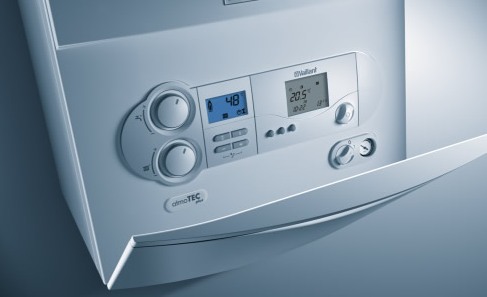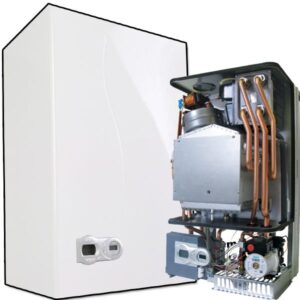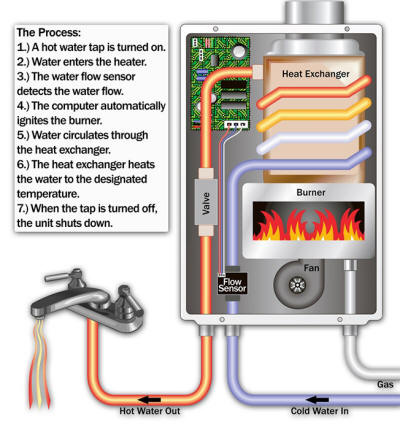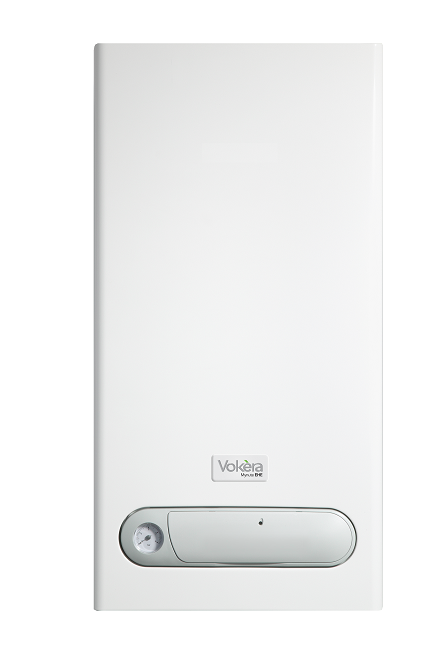Which boiler is right for you??
Modern Gas Central Heating Boilers

An open coal fire as the main heat source
Modern living, government pressure, and consumer demand has meant the way we heat our homes has changed tremendously in the last 20 or 30 years. No longer does the first riser of the house have to go downstairs, and get the fire going to warm up the room for the children, and to get some hot water to wash and bathe in. Gone are the days of having to clean the fireplace and remove the ash and remains of the whatever has been burnt on it the night before.
We are now in the twenty first century, and we demand comfort, efficiency, convenience, and above all, reliability. All of this has to fit in with our hectic lifestyles. Boiler manufacturers have designed modern boilers and controls to fulfill all the requirements of the modern family, whilst also trying to push efficiency closer and closer to 100% as they can get.
Which boiler is right for you? Well, you need to look at your lifestyle requirements, house size, family size, radiator requirements, and also budget. There are boilers for every budget, some very good, some very bad. You can generally stick to one of the main boiler manufacturers as a safe bet for reliability and support.

Choose the right boiler for your lifestyle needs
There are many different variants of central heating boilers, and we can categorize them several ways. The easiest way to group them is by the way in which they operate. We have Combination Boilers, or combi boilers, where typically everything is encased inside one box on the wall. And then we have Conventional Boilers, where we have two tanks in the loft, and an airing cupboard with hot water cylinder. We also have System Boilers, where we have an airing cupboard, but one less tank in the loft.
Research your Boilers thoroughly
Purchasing a boiler is a very important decision, you will want a good ten to fifteen years reliable service from it at least, so please make sure you do your research before you buy.
Which one do you choose? We have put together some information straight from experienced tradesmen, the people who actually work in the field day to day, so please click below to take you straight to the relevant section.
Combination boiler, or Combi Boiler
You’ve probably arrived here if you are thinking of having a combi boiler fitted? Well, this is the best-selling boiler type for gas central heating in Britain. Over half of all boilers fitted now are combination boilers. A combination – or ‘combi’ – boiler provides heat for your radiators and domestic hot water on demand. They have been around for the last 30 years or so, some of the earlier models carry a few horror stories for reliabilty, however modern technology has come on leaps and bounds, especially in the last 10 years.
The name comes from the fact it combines all the functions of a traditional boiler, hot water cylinder and cold water tank set-up. All the major parts are in one unit, which makes them convenient to install.
 Typical Combi Boiler Typical Combi Boiler |
|---|
There are different types, but they all work by taking cold water straight from the mains supply and heating it as you need it. When you turn on a tap, water is drawn from the mains, heated in the boiler and comes straight out of your tap nice and hot
This means there’s no need for a separate hot water storage cylinder or cold water feed cistern. But there’s a small time lag between turning on the tap and getting hot water, and the flow rate is limited by how quickly the boiler is able to heat up the water.
The advantage is they require less space than heat-only boilers (because there is no storage cylinder), and avoid heating water that’s not used immediately. If you have adequate pressure, you can also run a nice power shower from a combi boiler. You can also put your combination boiler up into the loft space, as it’s a sealed system, gravity has less of an effect on the way it works, (whereas a tank fed system has to have the tank at the highest point of the system If there are only one or two occupants living in the house they are ideal.
On the down side, the flow rate limits how much water you can use at one time – no filling the kitchen sink while running a bath, for instance. Also, they can only provide heating, or hot water, not both at the same time, so if you have a large family who showers early on a winters morning, be prepared that your heating will cool down for as long as you’re in the shower. Some areas also have very poor mains water flow, so a combination boiler may be least preferred over a tank fed system.
Flow rates and Choosing combi Boiler Size
Combination boilers start off at around 24kW in terms of heat energy, this is sometimes reflected in the model of the boiler i.e. Worcester Greenstar 24i Junior. (We no longer use BTU’s as in days gone by to size boilers).
This figure is important as it will be linked directly to its ability to heat your water. You can get a combi boiler with kW ratings in the 40’s. Using worcester again as an example, Worcester Greenstar 42Cdi. We no longer size combi boilers on radiator requirments alone, the hot water requirements are more important than anything else. Nearly all combination boilers can cope with heating systems in larger houses.
Worcester Greenstar 24i Junior gives 9.8 litres a minute at 35 degree rise
Worcester Greenstar 42Cdi gives 17.2 litres a minute at 35 degrees rise
You can fill a bath almost twice as quick with a 42kw Worcester than a 24i Junior model. A 100 litre bath would take about 5 and a half minutes to fill with the larger boiler, but just over ten minutes for the smaller model. With power showers, a 24kW may struggle, whereas when you start increasing the output, so does the ability to deliver water to the shower increase.
For people living on their own with low hot water requirements, a 24kW would be ideal. However for a larger family/property, a larger boiler would be required.
 Transfer of gas energy to heat hot water Transfer of gas energy to heat hot water |
|---|
Combi Boiler Systems
These are as simple as at comes. One pipe away from the boiler, going to your radiators (Flow Pipe), and one pipe coming back, to complete the loop (Return Pipe). Each radiator has a flow and return to increase warm up time, and we commonly call this a two pipe combi system. You can install radiators anywhere in the house, in the loft even.

You can get combi showers specifically designed for these systems, they run straight off the hot water pipework for convenience.
You will probably have a room thermostat for control, mounted on the wall, which measures air temperature. This thermostat shuts the heating off once a preset temperature has been reached, by means of interrupting the demand for central heating.
These are the easiest systems to install, and the easiest to adapt.
Word of Caution
Combination boilers may not be suitable for boiler changes on an old system. They exert a higher water pressure on your central heating system opposed to a tank fed system,, and if you have ‘suspect’ pipes, valves or radiators, you may get a little wet!!
You might also miss using the (wasted) heat from your hot water cylinder in your airing cupboard. When upgrading from a conventional boiler to a combination boiler, please be aware that the gas pipe may not be large enough. Provision may have to be made to increase the gas pipe, the gas meter may be the other side of the house, this may be a deciding factor in staying with a conventional boiler. Also note, if you have a water meter fitted, you may not like using a combination boiler, as you have to wait slightly longer for consistent hot water than you would using a tank fed system.
Conventional heat-only open-vent boiler
Heat-only boilers are mainly fitted in larger houses, and came as standard in many new houses built during the seventies, eighties and nineties. They are fitted in some new builds, however combination boilers are starting to buck the trend for the spacesaving element. They provide heat for radiators directly, and produce hot water which is stored in a separate hot water cylinder. You normally have two tanks in the loft, one for the domestic hot water feed and one to feed the central heating. You are limited where you install these in your house, as the feed tank in the loft must be a set distanec higher than the boiler.
This type of boiler can be wall mounted, floor standing, or even behind your fire, as a combined back boiler fire unit. These arrangements take up more space than a combi boiler system, but because there is a large tank of stored hot water you can use several taps at once. This makes this type of system more suitable for larger houses, and for those with families.
Please note that with a standard vented cylinder, you are restricted by the amount of water stored in the cylinder, so larger users may wish to choose their set up wisely. For instance you might run a bath, then need to wait for the boiler to heat up the water in the cylinder again before you can run another. You can overcome this by installing an unvented hot water cylinder, or a thermal store cylinder with a mains coil.
These boilers may be connected to a fully pumped system or for slightly older systems a gravity water pumped heating system.
System heat-only boilers
A system boiler, just like an open-vent boiler, works excatly as a conventional boiler above, however the need for a feed and expansion tank is removed, and we commonly use the term “sealed system” .There is a pressure gauge on the boiler, and a method of letting water into the system normally via a filling tap. Some system boilers also have the pump built in, so there are less components elsewhere on the system.
|
System boiler with pressure gauge
|
|---|
Generally speaking, a “sealed system” tends to suffer from airlocks a lot less (whereby awkward pipe runs cause air to stop the water flowing to certain radiators), and also radiators tend to warm up quicker. Once again, because there is no tank in the loft, one can install a system boiler at the highest point of the house
Coupled with a high recovery cylinder (a cylinder with a very fast warm up time), or an unvented cylinder (mains pressure water storage), it is the ideal choice for the family home which needs every inch of space for storage and has a high demand for hot water.

